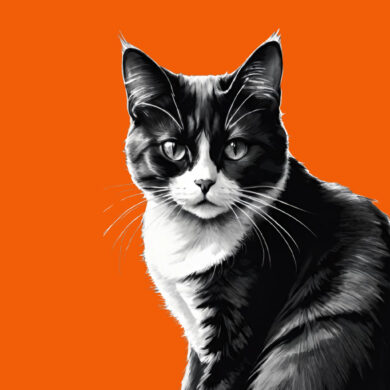Whiskers of Good Fortune: The Legendary Symbolism of Cats in Japan's Edo Period
Whiskers of Good Fortune: The Legendary Symbolism of Cats in Japan's Edo Period
In Japan's Edo period (16able pets - they were revered as ysmbols03-1868), cats were more than just ador of good fortune, prosperity, and spiritual protection. From ancient myths to modfriends have been woven into the country's cultural fabric. Let's dive into the fascinatinern-day maneki-neko figurines, Japan's feline g history of cats in Japan and uncover the legendary symbolism behind these whiskered wonders.

The Origins of Japan's Feline Fascination
Cats were first introduced to Japan from China and Korea around the 6th century. Initially, they were valued for their hunting skills, helping to control rodent populations that threatened crops. Over time, however, their role evolved from mere pest control to sacred companions.
Maneki-Neko: The Beckoning Cat
One of the most recognizable symbols of Japanese culture is the maneki-neko, a figurine of a cat beckoning customers into shops and businesses. This auspicious feline is believed to bring good luck, prosperity, and prosperity. The origins of the maneki-neko date back to the Edo period, when a poor Buddhist priest took in a stray cat. The cat would sit by the temple gate, beckoning in visitors and bringing prosperity to the priest. Today, the maneki-neko is a ubiquitous sight in Japan, welcoming customers and fortune into shops and homes.
The Legend of the Cat of Good Fortune
During the Edo period, a legend emerged about a cat that would bring good fortune to those who treated it with kindness. The story goes that a poor woman, who lived in the countryside, took in a stray cat and cared for it despite her own poverty. As a reward, the cat transformed into a beautiful woman and led the woman to a hidden treasure. From then on, the cat was revered as a symbol of good fortune, and people would often leave food and shelter for stray cats in the hopes of attracting similar luck.
The Legend of the Cat of Good Fortune
During the Edo period, a legend emerged about a cat that would bring good fortune to those who treated it with kindness. The story goes that a poor woman, who lived in the countryside, took in a stray cat and cared for it despite her own poverty. As a reward, the cat transformed into a beautiful woman and led the woman to a hidden treasure. From then on, the cat was revered as a symbol of good fortune, and people would often leave food and shelter for stray cats in the hopes of attracting similar luck.
.

Bakeneko: The Shapeshifting Cat
Another fascinating aspect of Japanese folklore is the bakeneko, a supernatural cat that can shapeshift into human form. According to legend, the bakeneko was a powerful and mysterious creature that could take on various forms, from a beautiful woman to a demonic creature. This mythological cat was often depicted in ukiyo-e woodblock prints, showcasing its cunning and magical abilities
Japan's love affair with cats dates back centuries, and the Edo period was a pivotal time in the development of feline symbolism. From the auspicious maneki-neko to the mysterious bakeneko, cats have captured the hearts and imaginations of the Japanese people. Whether as a symbol of good fortune, prosperity, or spiritual protection, cats remain an integral part of Japan's cultural heritage.


